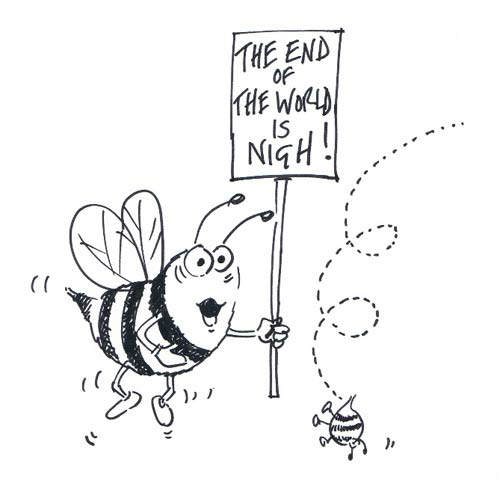|
|
Mobile phone towers may be ultimate cause of honeybee population collapse |
|
Honeybees pollinate about one third of all the food consumed by first-world nations. Without honeybees, the global food supply would fall dramatically and prices would sky-rocket. Without honeybees, the human population would plummet. Honeybees are crucial to the chain of life on Earth, and they are dying in record numbers. Important factors in the cause of the deaths of the honeybees include pesticides, air pollution and genetically modified organisms, but new research from the Swiss Federal Institute of Technology has revealed that mobile phone signals may actually be causing the most harm to honeybees. In 2003-2004, bee colonies worldwide suddenly started to show symptoms of colony collapse disorder. In this joint study by the Swiss Federal Institute of Technology and the Apiary School of the City of Lausanne in Switzerland, led by Daniel Favre and colleagues, electromagnetic waves originating from mobile phones were tested for potential effects on honeybee behaviour. Mobile phone handsets were placed in the vicinity of the honeybees, and the sounds made by the bees was recorded and analysed. The scientists found that the bees made a worker piping sound, which in a normal environment is either made only when the bees are about to swarm, or when the bee colony is being disturbed. The study showed that the bees become strongly disoriented and suffer from widespread miscommunication that causes them to stop seeking food and begin swarming. The bees were not disturbed by mobile phone handsets that were inactive or on standby. This means that honeybees are sensitive to pulsed electromagnetic fields generated by these mobile phones. Although in real life, bees do not have mobile phone handsets in their hives, this study paves the way for further studies. In Switzerland, exposure to radio frequency electromagnetic fields (RF-EMF) has increased by an order of magnitude in the last 20 years, meaning that when the hive locations were simulated for this study, the scientists found that two mobile phone handsets generated approximately the same exposure as the bees would have been exposed to, given as well the proximity to mobile phone base stations. Source: Association Kokopelli Read more research on mobile phones and masts First Published in May 2011 |













